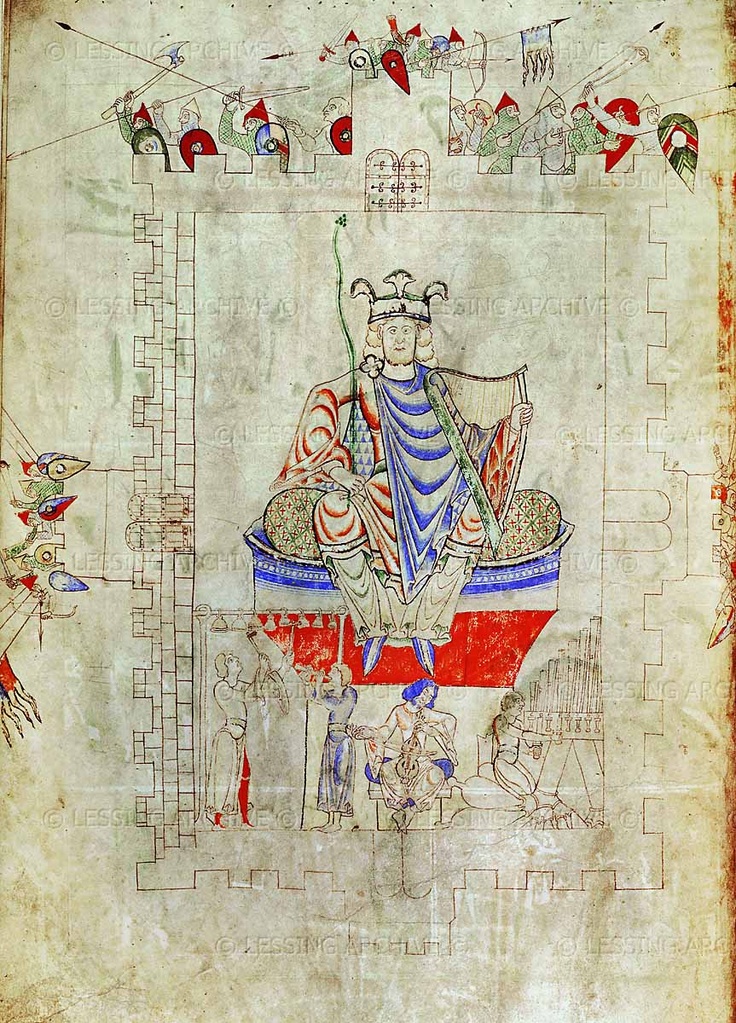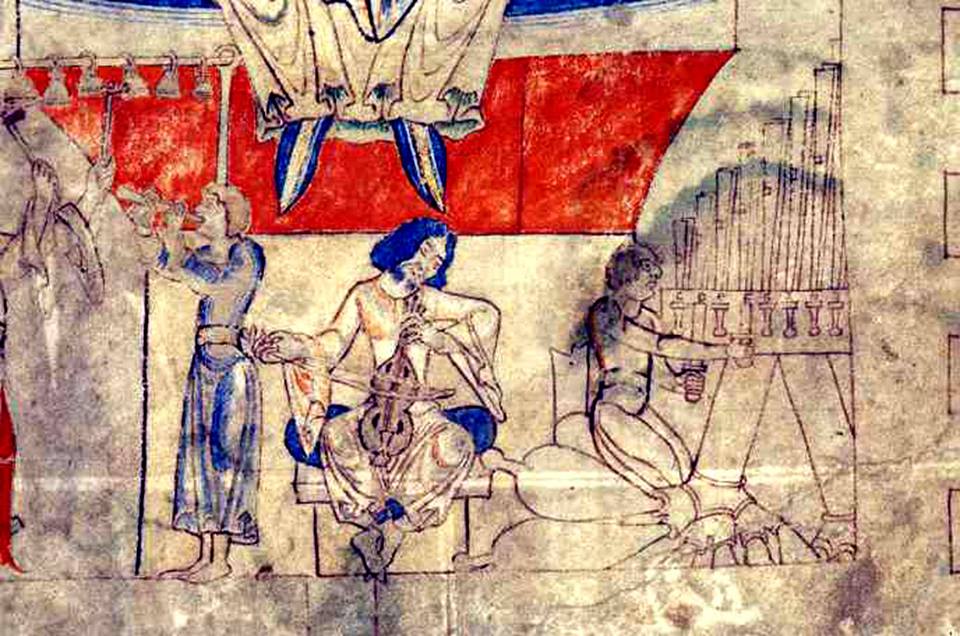Bible of Stephen Harding (12th century)

The manuscript
The Harding Bible (Dijon, Biblioteque Municipale 14) is a manuscript dated 1109-1111 from the Cistercian abbey of Cîteaux in Burgundy (France). Stephen Harding was a Cistercian monk (deceased on 28th March 1134), third abbot of Cîteaux, and one of the founders of the Cistercian order. This manuscript, which includes wonderful coloured miniatures that illustrate various biblical scenes, was made while he was abbot of Cîteaux.
The organ in David’s iconography
In the image you can see a detail from folio 13v with a large image of king David with a harp and his musicians in a smaller scale at his feet. The musician on the right is performing on a pipe organ with slides. Each slide opens access for the air into the pipes. This type of “keyboard” works by pulling the slides in and out. As long as the slide is open the pipes will sound. Rather than the use of buttons or a more modern keyboard, the playing technique therefore involves constant manipulation of the slides for both opening and closing and a different way of coordinating the hands when playing various slides at the same time.
This organ has numerous bellows attached to two “conflatoria” – in other words, to two conduits that collect the air from the various bellows. Period sources tell us that, when making an organ, more than one bellow is necessary. At least two would be needed in order to maintain a constant sound. If the pipes are large and require lots of air, then even more bellows might be required.

Is the organ a reflection of a real instrument?
What is remarkable to note here is that each slide has a letter written on the top: C, D, E, F, G, A, B rotundum (B flat), and B quadratum (B natural). Those are ordered from left to right from a lower pitch to a higher one, while the sizes of the conical pipes are ordered in the opposite direction. The longer the pipe, the lower the sound. Here in this depiction the lower pipe seems to be placed vertically on the spot that corresponds to the highest pitch of the instrument (B natural). And the shorter pipe seems to be placed on the top of the lower pitch (C).
This contradiction between the pipes and the slides reminds us of the difficulties we experience nowadays in understanding that this type of image is not a “photographic” representation as we are used to today, where we expect the representation of real objects in their appropriate forms, sizes, colours and detail. Rather, it represents a biblical scene that requires a good knowledge of medieval iconography in order to interpret what the depiction intended to communicate to the medieval mind. In the case of this concrete image, as long as the representation includes four different instruments next to David, the observer can automatically identify a biblical passage. This one contains the indispensable elements that make it recognisable.
Stay tuned for more articles about organ reconstruction and you will learn the reasons why it is not advisable to reconstruct a 1:1 organ from this image!
